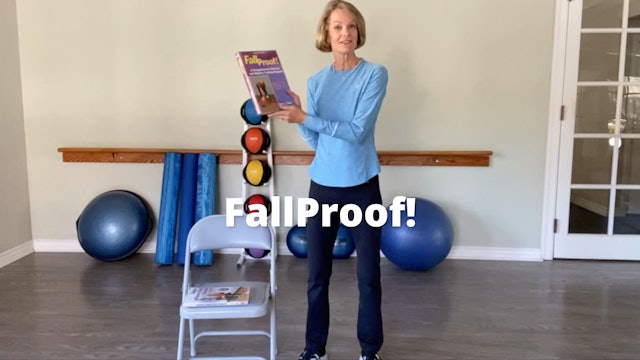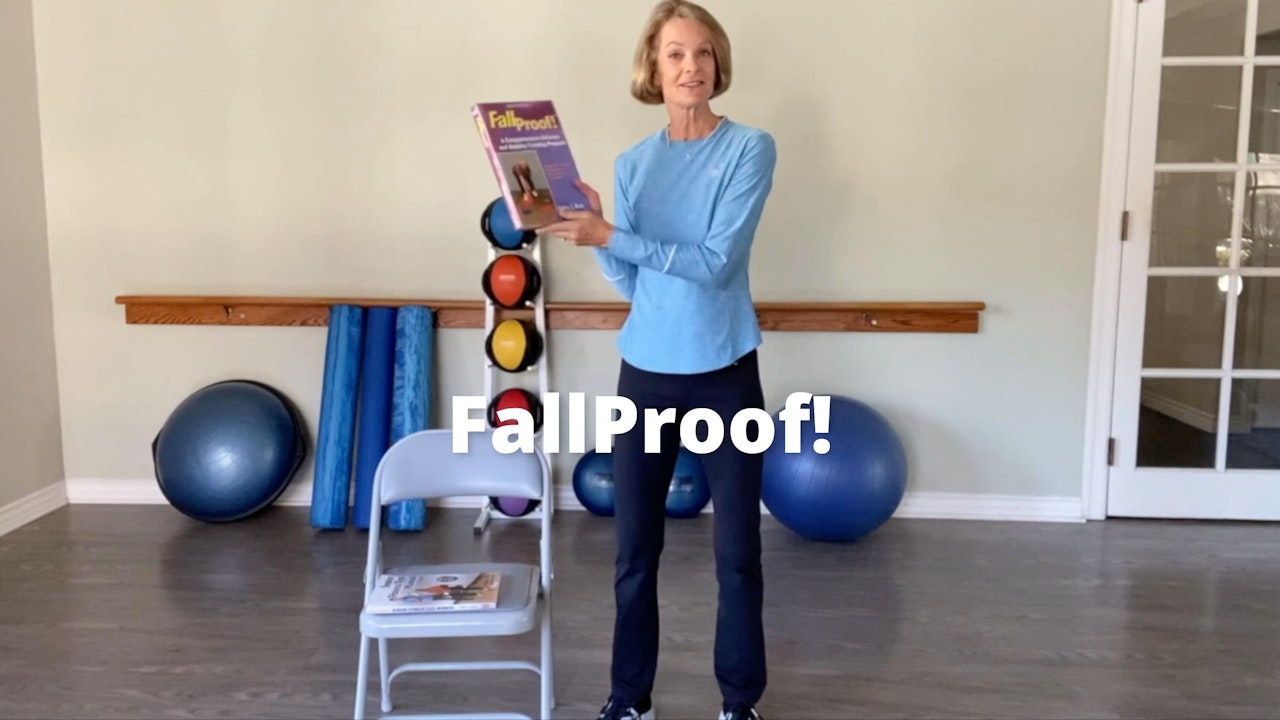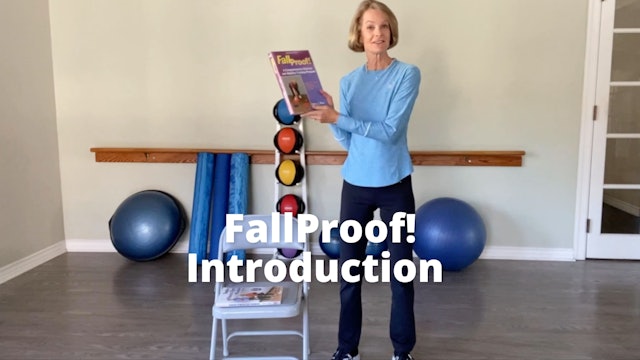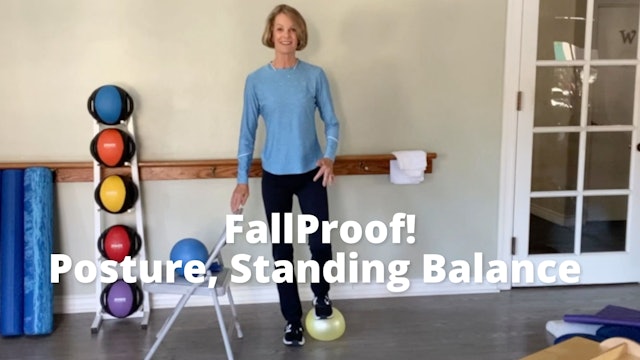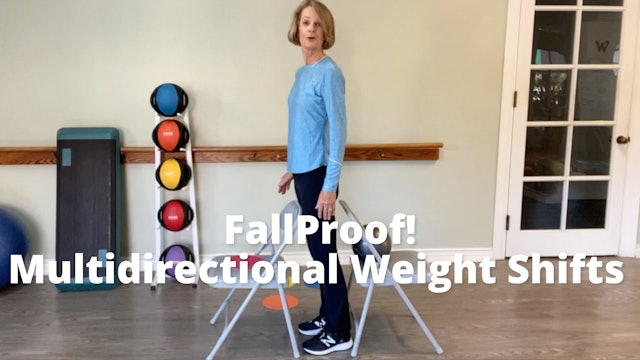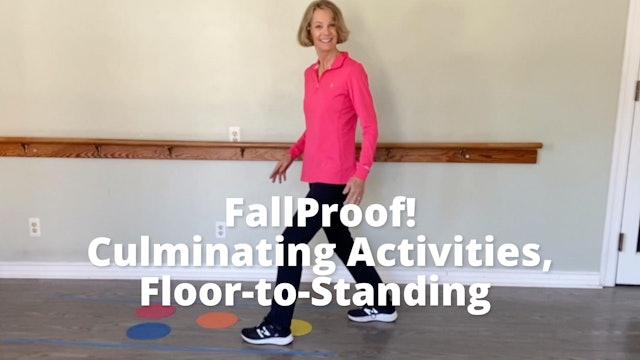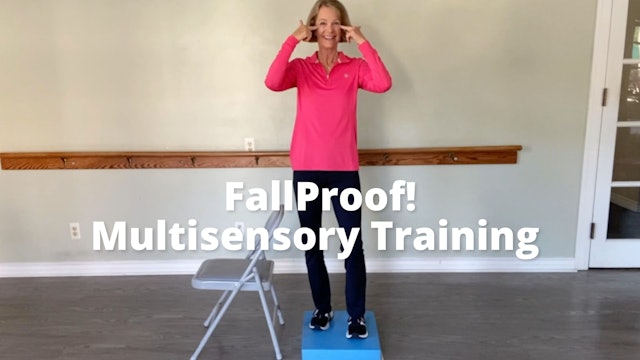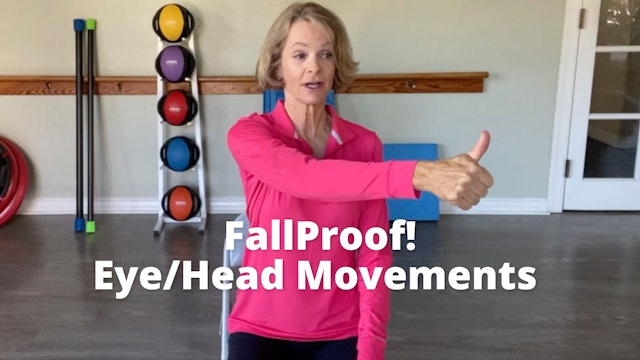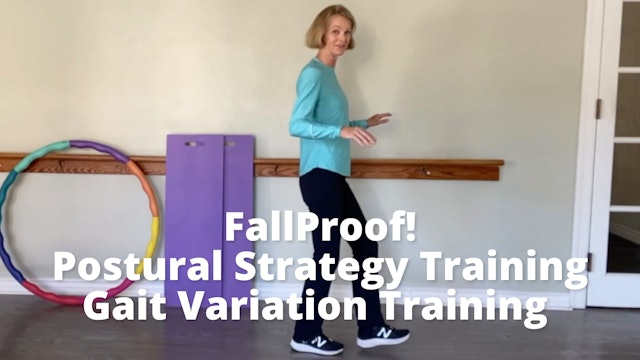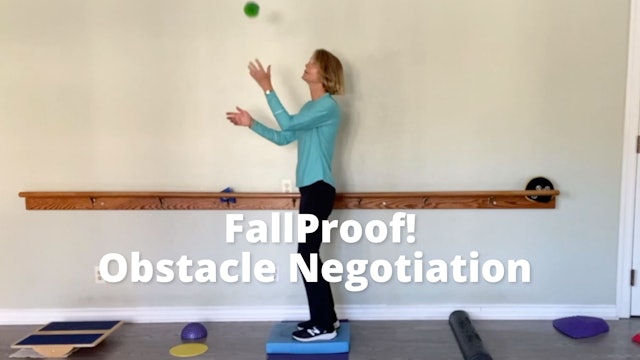FallProof
With the permission of Dr. Debra Rose (creator of the FallProof Balance and Mobility Training Program) this video outlines the key elements presented in the Program's second edition textbook.
-
FallProof! Introduction
With Dr. Debra Rose's (the creator of FallProof) permission, this video outlines practical aspects of the "FallProof!" Second Edition textbook.
-
FallProof! Posture, Standing Balance
Chapter 4, Level 2
The key to balance is to be able to control one's center of gravity. In this video, learn the various options to create a reduced base of support, and see different ways to practice increasing the balance challenge by tweaking task and environmental demands. -
FallProof! Multidirectional Weight Shifts
Chapter 4, Level 3-7
Weight shifts are the key to center of gravity - control training. This video demonstrates multi-directional weight shifts. -
FallProof! Culminating Activities, Floor-to-Standing
Chapter 4, Level 7
Learn lots of fun (and functional) “culminating activities," which are a delightful way to practice in game form the balance skills learned so far. Included, importantly, are ways to teach your clients how to safely get up off the floor, either using more lower, or upper, body... -
FallProof! Multisensory Training
Chapter 5
Learn how to tune up the visual, somatosensory, and vestibular systems of balance. This video explains in more detail exactly what happens with balance training.
Bonus! Fun ideas to engage the vestibular system with games. -
FallProof! Eye/head Movements
Chapter 5, Level 1-4
Learn seated, standing, walking and practical games to tune up your client's eye and head movements in this informative video.
Many people say, "I just turned my head," when describing how they fell. These exercises will help prevent those often - serious falls. -
FallProof! Postural Strategy Training, Gait Variation Training
Chapter 6 Level 1
Chapter 7 Level 1- 3
This video shows you how to teach the “ankle strategy” that we use to maintain balance, and also gives you lots of examples of “Gait Pattern Enhancement and Variation Training” from the FallProof book. -
FallProof! Obstacle Negotiation
Chapter 6, Level 4 - 5
Your clients will love the activities you’ll learn in this video about obstacle negotiation and obstacle avoidance. A fun way to help your clients practice how to safely deal with the many obstacles they encounter in their daily life. -
FallProof! Culminating Activities for Gait Variation Training
Chapter 5, Level 5
Your client's balance will become more automatic when they play these fun culminating games because they'll be thinking about the activity instead of focusing on their balance.

